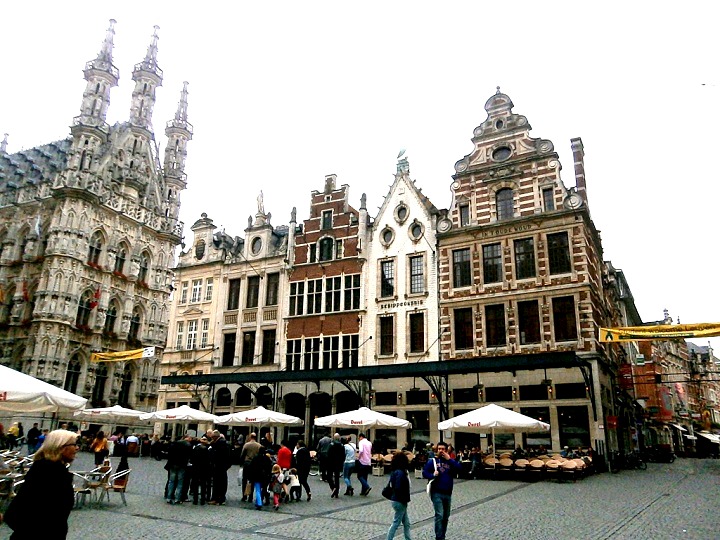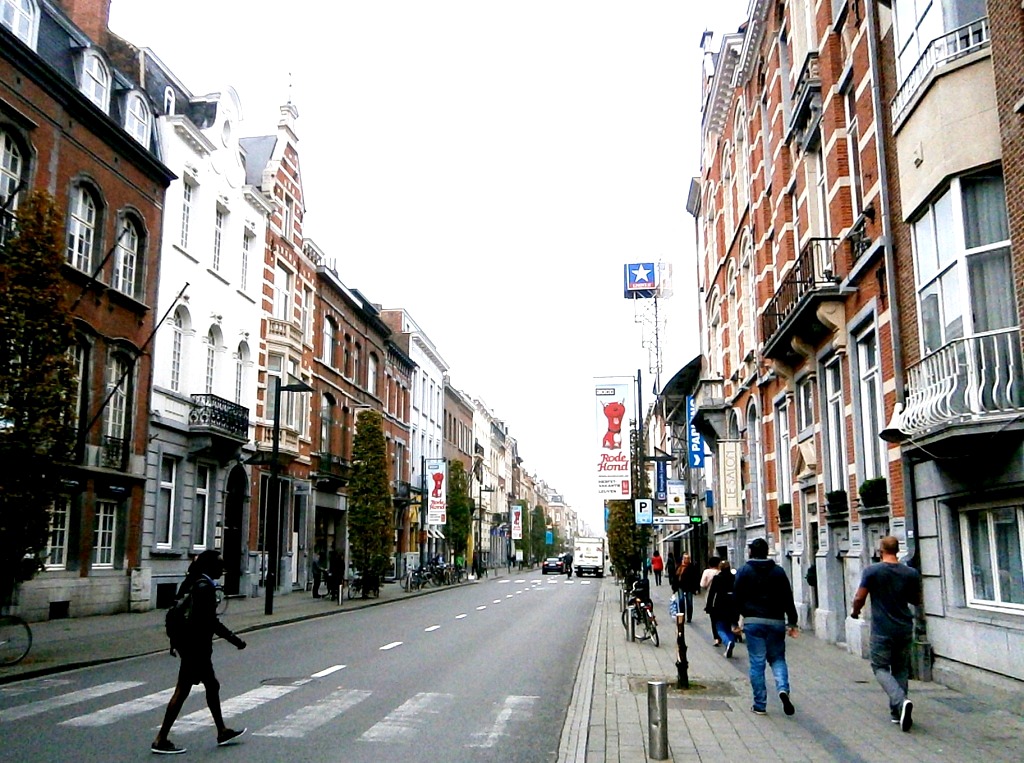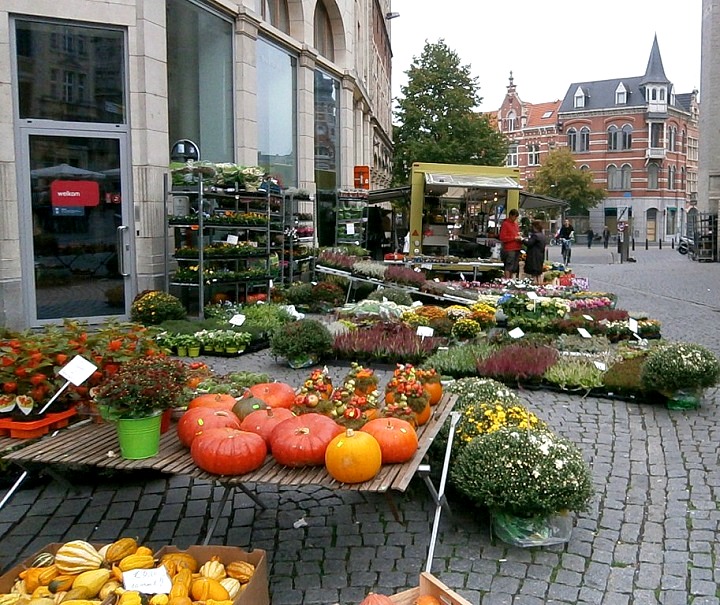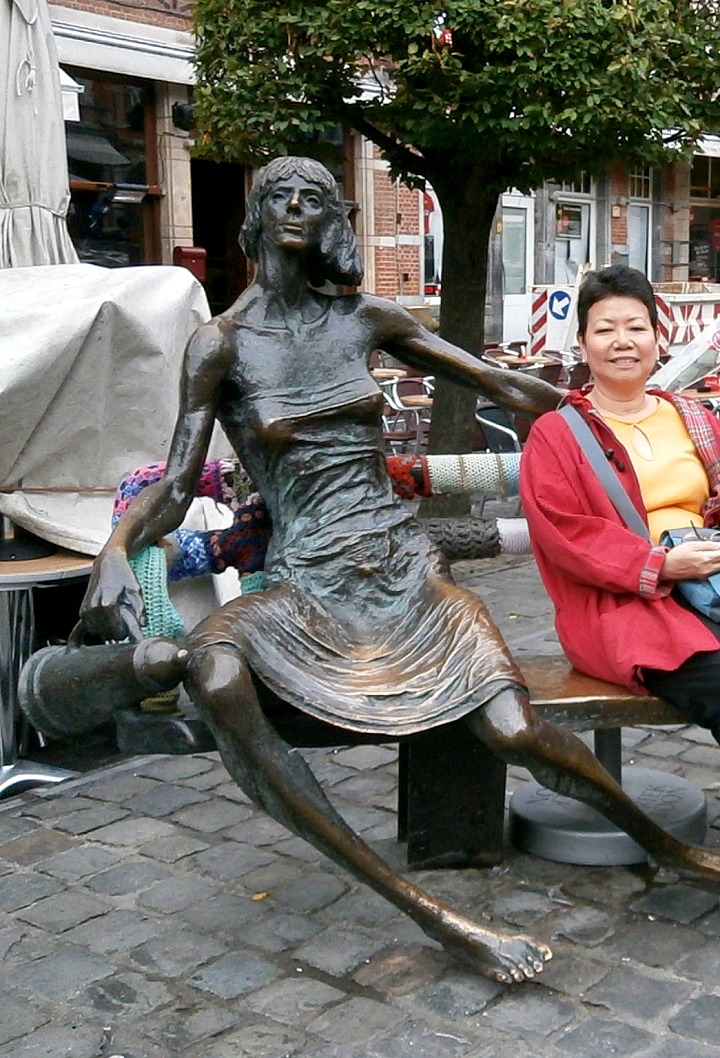Filtered by: Lifestyle
Lifestyle
The university town of Leuven in Belgium
Text and photos by ALICE SUN-CUA

The typical storefronts in the Old Market, with part of Town Hall on the left and a yellow banner welcoming students to the college town on the right
So one cool early spring morning, my husband Alex and I took a train from the Central Station in Brussels for Leuven, about 25 km east of the capital. We learned that the town's name is Louvain in French, but both names were clearly written in the huge rotating LED board high on one wall of the station. Our ticket said 9:44 a.m., but when the train that said Leuven stopped at 9:40 a.m. we got in immediately. We later learned that the 9:44 trip was a direct one, but it was fun looking at the passing landscape and stopping at several towns, one of which was “Erps Kwerps,” an interesting name, indeed!

Leuven's streets are pedestrian-friendly
Along the way, we marveled at the beautiful cobblestone streets and the wide clean pedestrian paths. In one of the shops, a bubbly young girl offered us fresh pears with stickers that said: “Schuilt er en apple achter deze peer?” (Is there an apple lurking behind this pear?) We later learned that it was the shop’s promo for Apple’s iPhone 5.
We reached the end of the street, turned, and stopped on our tracks. To our left was a splendid castle-like edifice, with an intricate, lace-like façade that had niches for countless images. Colorful pennants brightened the walls. It was the Town Hall building. Constructed from 1439 to 1463, it was built in the overly-sculptured, decorative style of the so-called Grabant-Gothic style. It looked like a cathedral with its soaring six open-work spires. During the 19th century, about 236 statues of noble families, local scholars and heroes were placed on the niches. In the towers were statues of saints and prophets. It was dizzying just to stand in front of the whole building, and making sense of the thousand and one details.
Just across it was the St. Peter’s Church, parts of which were being renovated when we visited. The church housed the famous “Last Supper” by Dirk Bouts; but what impressed me most was the fully carved hardwood pulpit on the right of the central nave. Looking closely we could see St. Peter and the rooster that crowed when he denied Christ thrice before sunrise. The pulpit was fully decorated with minute engravings, and it looked as if carved from a single tree. Above it was an umbrella-like circular “ceiling” with palm leaves.
When we went out of the church we realized we were in time for the weekend Farmer’s Market. Many produce lined the streets, including bright-colored pumpkins in many hues. Flower sellers were doing brisk business, as many locals were haggling over flowering plants. Freshly-baked bread, countless kinds of cheese, and some handicraft shops vied for the browsers’ attention. Without our knowing it, we had reached the Oud Markt, or the Old Market Square.

Plants and fresh produce at the city's weekend farmers' market
In the center of the square was an intriguing bronze figure, a beautiful young woman sitting gracefully on a wooden bench, with her head flung up as she smiled towards the sky. Her arms were open, the left one draped over the back support of the bench. In her right hand was what looked like a water kettle. This was the famous “De Kotmadam” (The Landlady) figure at the Oud Markt, done by Fred Bellefroid and installed in 1985, a gift to the city by the Leuven Tourism Board.

The author sits with the popular Kotmadam bronze statue at the Old Market Square
The KU Leuven is the oldest university in existence, and the largest in the Low Countries. Across the university too were many small ethnic restaurants, like the New Holy Cow (Fine Indian Food) which offered “Home Deliveries and Take Away.”
Further on we encountered another bronze statue, “Renée,” a young schoolgirl cradling her books and leaning nonchalantly against a wooden peg. Indeed she blended so well with the university atmosphere! Across the street too was another old church, the St. Michael’s, which was described as a “Jesuit baroque” (1650- 1671) with its wide, curved façade, tall round pillars, rich decorations; and especially the “altar outside the church.”
We continued to wind our way slowly around Leuven, discovering some more interesting nooks, simply soaking up the quiet old-world atmosphere of this university town. — BM, GMA News
Find out your candidates' profile
Find the latest news
Find out individual candidate platforms
Choose your candidates and print out your selection.
Voter Demographics
More Videos
Most Popular





